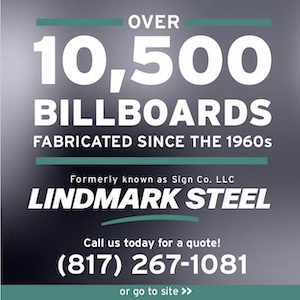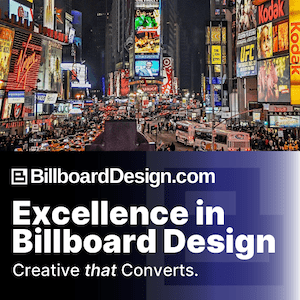![]()

 By Kerry Yoakum, Vice President of Government Affairs, OAAA
By Kerry Yoakum, Vice President of Government Affairs, OAAA
On February 1, FHWA informed New York State DOT that it would withhold $14 million as penalty for the State’s installation of illegal on-road signs that promote New York State. Kerry Yoakum, an attorney and former state regulator at Ohio DOT, analyzes and explains this federal sanction.
 Q: What is the Manual on Uniform Traffic Control Devices (MUTCD)?
Q: What is the Manual on Uniform Traffic Control Devices (MUTCD)?
A: The Federal Highway Administration (FHWA) publishes the MUTCD, which contains all national design, application, and placement, standards, guidance, options, and support provisions for traffic control devices. The purpose of the MUTCD is to provide uniformity of these devices, which include signs, signals, and pavement markings, to promote highway safety and efficiency on the nation’s streets and highways.
Q: What is the legal status of the MUTCD?
A: The MUTCD is adopted by reference in accordance with Title 23, United States Code, Section 109(d) and Title 23, Code of Federal Regulations, Part 655.603, and is approved as the national standard for designing, applying, and planning traffic control devices.
Q: Does each state have its own state MUTCD? Is that allowed, and if so how does a state MUTCD relate to the federal MUTCD?
A: State MUTCDs are allowed. Title 23 of the Code of Federal Regulations requires all states to do one of three things within two years after a new national MUTCD edition is issued or any national MUTCD amendments are made:
- Adopt the new or revised national MUTCD as the standard for traffic control devices in the state
- Adopt the national MUTCD with a state supplement that is in substantial conformance with the new or revised national MUTCD; or
- Adopt a state MUTCD that is in substantial conformance with the new or revised national MUTCD.
Q: What does substantial conformance mean in regard to state supplements and state MUTCDs?
A: In 2006, a specific definition of substantial conformance was added to the Code of Federal Regulations. 23 CFR 655.603(b) states that “substantial conformance means that the state MUTCD or supplement shall conform as a minimum to the standard statements included in the national MUTCD” and that “the guidance statements contained in the national MUTCD shall also be in the state manual or supplement unless the reason for not including it is satisfactorily explained based on engineering judgment, specific conflicting state law, or a documented engineering study.”
This section of the CFR also allows FHWA to grant exceptions in cases where a state MUTCD or supplement cannot conform to standard statements in the national MUTCD because of the requirements of a specific state law that was in effect prior to the effective date of this provision, if FHWA determines the non-conformance does not create a safety concern. Also, legal precedents have determined that state supplements and state MUTCDs can be more prescriptive than the national MUTCD. This means that a state can be more restrictive than the national MUTCD.
Q: How do “I Love New York” signs violate the MUTCD?
A: The MUTCD allows latitude for “State Welcome” signs located near state-line locations, which can display standard colors other than green, the State’s name, seal, and motto, and the governor’s name.
The “I Love NY” signs have a number of elements that are not allowed on highway signs; even on a state welcome sign and specific service signs and tourist-oriented directional (TOD) signs which are in the right-of-way:
1. The “I Heart NY App”(ref 1), the “ILoveNY.com”(1) website address, and the heart symbol in the App’s name are prohibited. They are considered promotional advertising which violates:
a. Section 1A.01 of the MUTCD, which states that traffic control devices or their supports shall not bear any advertising message or any other message that is not related to traffic control; and
b. Section 2A.06 of the MUTCD, which states that Internet addresses and e-mail addresses, including domain names and uniform resource locators (URL), shall not be displayed on any sign, supplemental plaque, sign panel (including logo sign panels on Specific Service signs), or changeable message sign.
2. Logos (ref 2) for “I LOVE NY” and for New York history, food, and parks are prohibited. Note: Logos are only allowed on specific service signs and TOD signs. Those signs have specific design requirements and are used only to provide direction to specific services and tourist facilities that meet the program requirements. The logos posted in New York State would not qualify. (See Section 2J.01 of the MUTCD)
3. Spacing between the series of signs is far too short. The spacing is reported to be 400 feet or less (it appears to be less). Section 2J.06 of the MUTCD requires a minimum of 800 feet between signs on a freeway to allow drivers adequate time to read and process messages while performing the driving task.
 The MUTCD in its entirety can be accessed for free by clicking here.
The MUTCD in its entirety can be accessed for free by clicking here.
Since taking office a year ago, Secretary Elaine Chao’s Department of Transportation has dealt with multiple right-of-way issues, taking these actions:
- Penalized New York State (February 2018)
- Denied Arizona’s request for a waiver to build full-service plazas on the highway for food and fuel (January 2018)
- Denied selling ads on the blank backsides of highway signs (April 2017)
- Turned down Texas DOT’s request to sell corporate sponsorships of overhang signs (June 2017)
[wpforms id=”9787″]
Paid Advertising

















